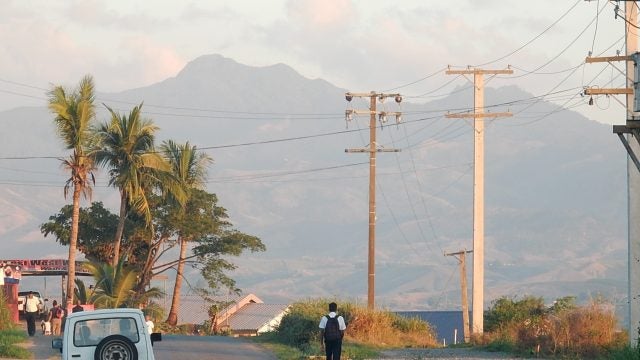Title: PART II: Sustainable Energy Pathways for Post-Pandemic Bangladesh
This article is the second installment of a two-part series. As COVID-19 ravages Bangladesh’s economy, its inevitable impacts have exposed the many dysfunctionalities and loopholes of the country’s power sector. This article attempts to better understand how the pandemic has affected Bangladesh’s power sector and anticipates the role of renewable energy technology in paving climate-resilient, sustainable energy pathways. Part I tackles the current shortcomings of the Bangladesh Power Sector, while Part II talks about the future; necessitating the need to recalibrate towards low carbon development opportunities.
Renewable Energy for Sustainability
The power sector crisis has clearly highlighted the unsustainability of the country’s current energy landscape. Fossil fuel-based power sources, while convenient for planning in the short term, have proven to be more volatile when struck with uncertainty––such as the uncertainty inflicted by a raging pandemic or by the consequences of climate change. As elucidated by the impacts of COVID-19 on Bangladesh’s power sector, there is a clear need to reset the nation’s energy policies and move towards low carbon development.
A suitable option for sustainable development in this regard is to expand the country’s renewable energy sector by investing in modular renewable energy options (without capacity payments).
For Bangladesh, the four main renewable energy (RE) sources that already exist are solar, biogas, wind, and hydropower, with solar photovoltaics (PV) having the highest success rates. As of July 2020, the total installed capacity of RE in Bangladesh was approximately 643.61 MW including both on-grid and off-grid electricity sources. With Bangladesh having the potential to increase its RE capacity by at least eighty-two percent, developing better RE policies and investing in renewable energy technologies can certainly help the country develop more sustainably while reducing current rates of air pollution and greenhouse gas emissions.
Compared to increasingly uneconomic fossil fuels, renewable investments are more stable, environmentally friendly, and increasingly cost-effective. Despite the sometimes-high initial costs of infrastructure setup, they offer consistent and predictable returns while delivering greater benefits to the wider economy, society, and environment. In South Asia, the cost of renewable energy is already less than two-thirds the cost of imported fossil fuels, and the price of solar modules is likely to further decrease by five to ten percent over the coming decade. Bangladesh’s potential for availing renewable energy options, which has been considered limited due to issues of cost and land availability, is now far more viable than previously anticipated.
The COVID-19 pandemic has provided Bangladesh the lag time to reflect on its existing development priorities, and with lower power demands, it has given an opportunity to invest in more sustainable energy sources. Opting for renewable energy over options such as LNG and coal imports will protect the country from external shocks and reduce the overall system cost in the long run.
As Bangladesh focuses on the long-term gains from availing more flexible renewable energy options, it is important to invest in solutions that overcome some of the existing RE barriers in the country and explore more economically viable opportunities.
Technological Innovations for Overcoming Barriers
The barriers to expansion of renewable energy in Bangladesh are mainly associated with its initial costs, land availability, and political will. Therefore, RE growth in Bangladesh must be driven by research and innovation that focuses on making RE options more accessible. Investing in technological advancements is crucial for better performance, improved reliability, and lower costs.
In Bangladesh, solar PV is one of the more widely accepted and implemented RE forms, but installing large-scale solar PV infrastructures proves to be challenging as they require a vast area of land. The difficulties of finding non-agricultural land and securing the government’s approval to acquire them has also deterred RE developments. In this regard, investing in floating solar PV systems, where the PV arrays and the inverters can be mounted on a floating platform, can bypass the need for large acres of land and utilise the country’s water bodies. Floating solar PV panels not only overcome the need for land, but also ensure higher power generation efficiency as the water underneath has a cooling effect, reducing overall stress on the system. Bangladesh has already started installing floating solar PV systems on a pilot basis. For example, Mongla port municipality installed 10 kWp floating solar systems on the water surface of its water treatment plant’s reservoir in 2019.
Another useful RE innovation worth noting is the use of solar irrigation pumps (SIPs) instead of conventional diesel-powered pumps for agricultural activities. The use of solar irrigation pumps in Bangladesh is an example of how renewable energy can address multiple development agendas.
At present, Bangladesh has 1.34 million diesel pumps consuming at least 1 million tonnes of diesel worth $900 million each year. SIPs allow farmers to replace expensive diesel-operated and electricity-run pumps and thereby lower the costs involved in irrigation activities. The technology helps rural farmers adapt to climate change-induced rainfall variability and allows them to water their croplands whenever required. SIPs are installed in a way that allow farmers to use the land for farming other crops as well. Currently, IDCOL has approved 1,429 solar irrigation pumps, of which 1,186 are already operational and the rest under construction. Considering its success and acceptance amongst farmers, IDCOL has now set the target of installing fifty thousand solar-powered irrigation pumps across Bangladesh by 2025.
Globally, many other RE technologies are in different stages of development. For example, research is being conducted on innovations that allow crops to grow while being shaded by solar PV panels, which will be suitable for Bangladesh as the country is primarily dependent on agriculture for its livelihood. Therefore, for Bangladesh to expand its RE sector sustainably, the country must continuously look out for new and innovative technologies.
Moving Forward
The outbreak of COVID-19 has exposed the many loopholes of Bangladesh’s power sector. While the primary issue burdening the power sector was overcapacity, the pandemic shed light on other longstanding issues such as the power sector’s reliance on government subsidies, the high capacity costs of IPPs and quick rental power plants, and the ongoing expansion of fossil fuel-based power plants. These issues, among others, aggravated the impacts of COVID-19 on the power sector and contributed to its losses and failures.
Now that Bangladesh has experienced an unpredictable shuffle of its existing plans and projections, especially in the power sector, it is essential that long-term planning considers uncertainties such as future pandemics, large-scale natural disasters, and climate change threats. Sustainability and anticipatory planning must be at the core of development. As the government of Bangladesh manages the crisis and plans for a recovery system, it must resolve some of the root problems within the power sector, such as the urgent need to phase out some of the IPPs and all the rental power plants, reconsider fossil fuel projects that are in the pipeline, and address the lack of follow-through regarding global mitigation commitments. The budget for the power sector needs to be redirected towards transmission and distribution infrastructure and RE expansion, instead of pursuing ongoing fossil fuel megaprojects that are at risk of staying idle without adequate energy demand.
The temporary reductions in oil prices and decrease in LNG costs may appear alluring as quick fixes, but they should not mask the dangers of volatility associated with depending primarily on fossil fuels. The government should rather optimize the opportunities arising from lower electricity demands and the reductions in renewable energy costs and focus on accelerating low-carbon development within the country.
As the country plans for the long haul, the need for green recovery within the power sector has never been more pertinent. With the growing threats of climate change the whole world will eventually shift towards clean and sustainable energy, which means the market for renewable energy will become more accessible and cost-effective. If Bangladesh utilizes its recovery funds to invest in RE technology and considers leapfrogging to sustainable energy pathways, the country will be spared from the immense costs associated with the inevitable shift from fossil fuels to renewable energy in the near future.
As Bangladesh re-imagines its current development trajectory and redesigns national plans and priorities, now is an opportune time to invest in green recovery and recalibrate a move towards low carbon and climate-resilient development opportunities.
. . .
Shababa Haque is an environmental researcher, working in the field of climate change and development. Her research focuses on climate mitigation and renewable energy, SDGs in relation to climate change, and transformative adaptation in Bangladesh. Shababa is currently a PhD candidate at Durham University Geography Department, working on sustainable social entrepreneurship.
Rukhsar Sultana is Research Associate at the International Centre for Climate Change and Development (ICCCAD). Her research work has mainly focused on exploring urban resilience aspects as well as climate change-induced health risks. Rukhsar’s research interests also include water resource management particularly differentiated impacts of WASH access in Bangladesh.
Dr. Ijaz Hossain has vast experience in greenhouse gas (GHG) mitigation, energy efficiency improvement, energy gap analysis, risk management, energy production & disbursement, environmental impact assessment and energy policy development both in government and non-government sectors. He is a recognized energy and sustainable development expert in the country. He has expertise on energy efficiency, value chain analysis and energy planning & modeling. He possesses more than 20 years’ experience in the field of chemical engineering with an emphasis on energy and environment both as a teacher/researcher and as a consultant engineer.
Recommended Articles

Export controls on AI components have become central tools in great-power technology competition, though their full potential has yet to be realized. To maintain a competitive position in…

The Trump administration should prioritize biotechnology as a strategic asset for the United States using the military strategy framework of “ends, ways, and means” because biotechnology supports critical national objectives…

Fiji, a Pacific Small Island Developing State (PSIDS), faces rural electrification challenges due to its dispersed geography and climate vulnerabilities. With 6 percent of Fijian rural households lacking…